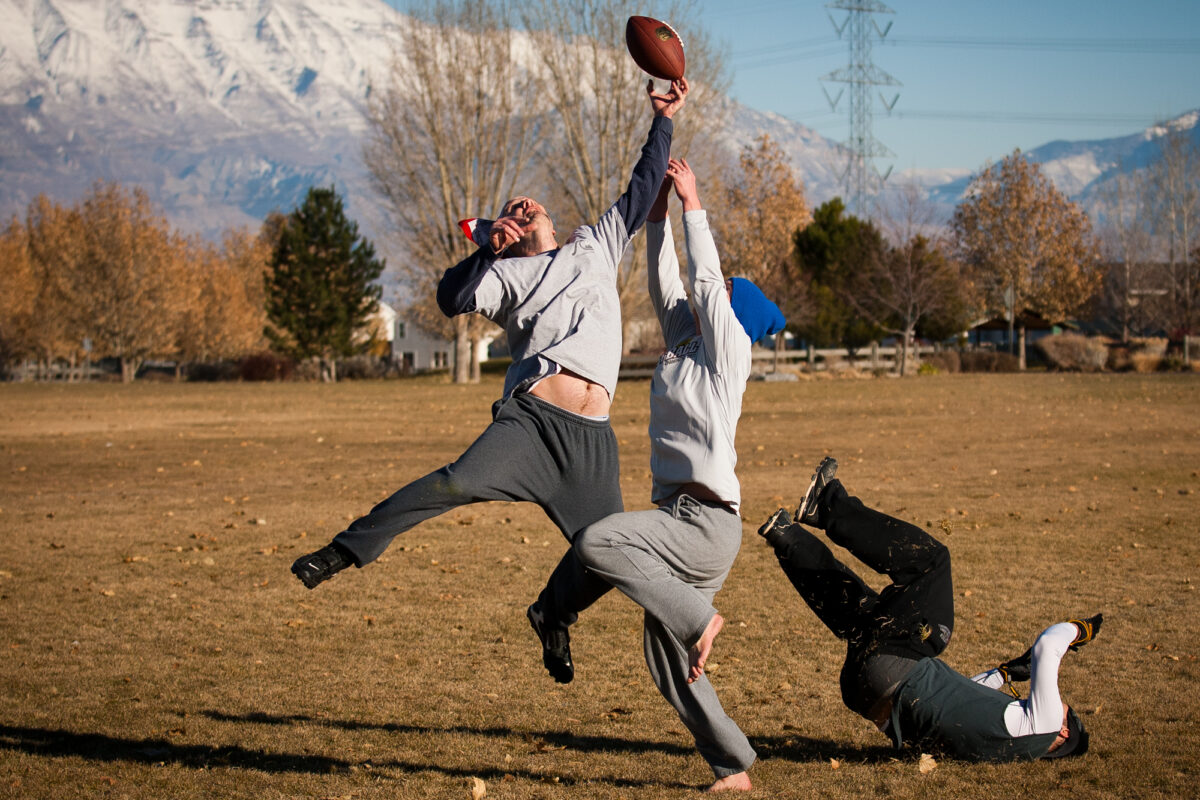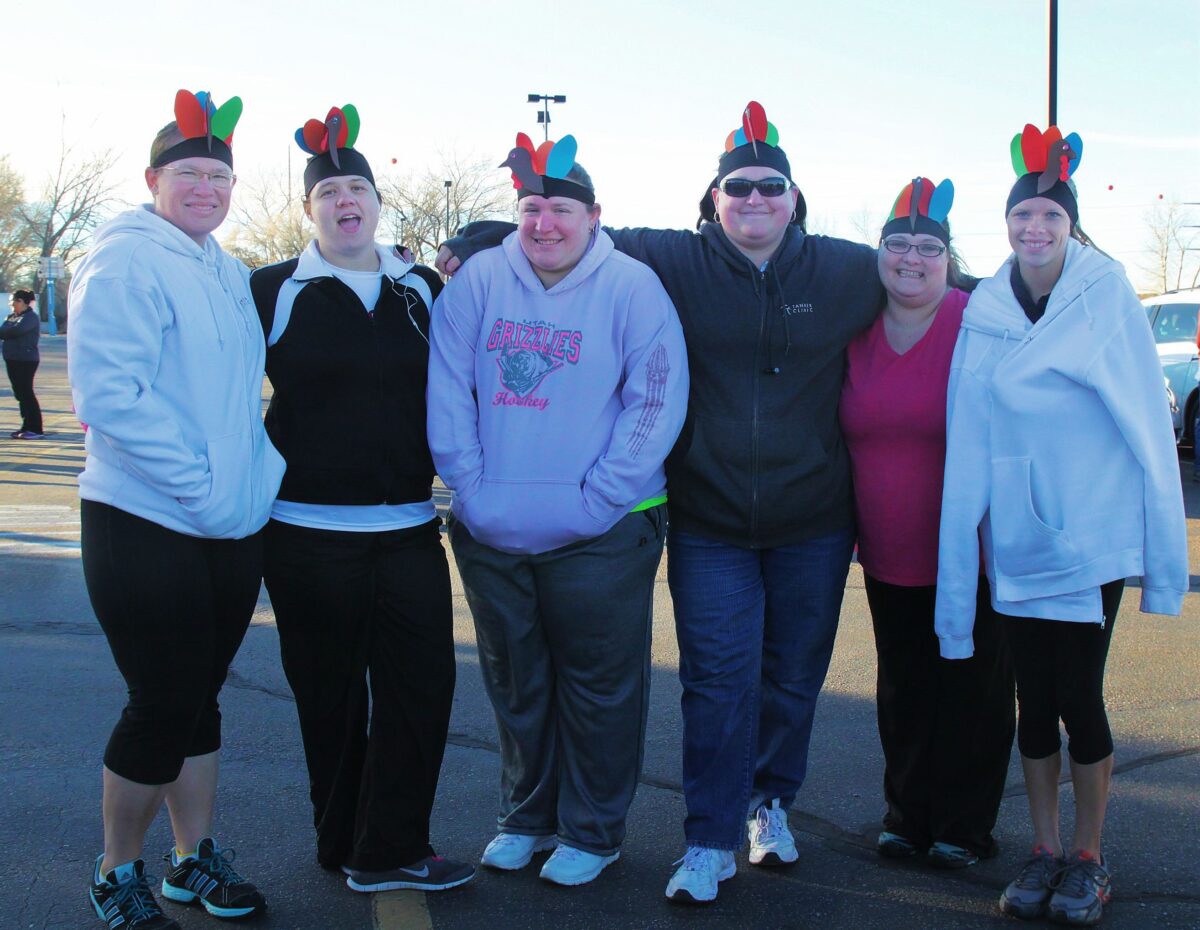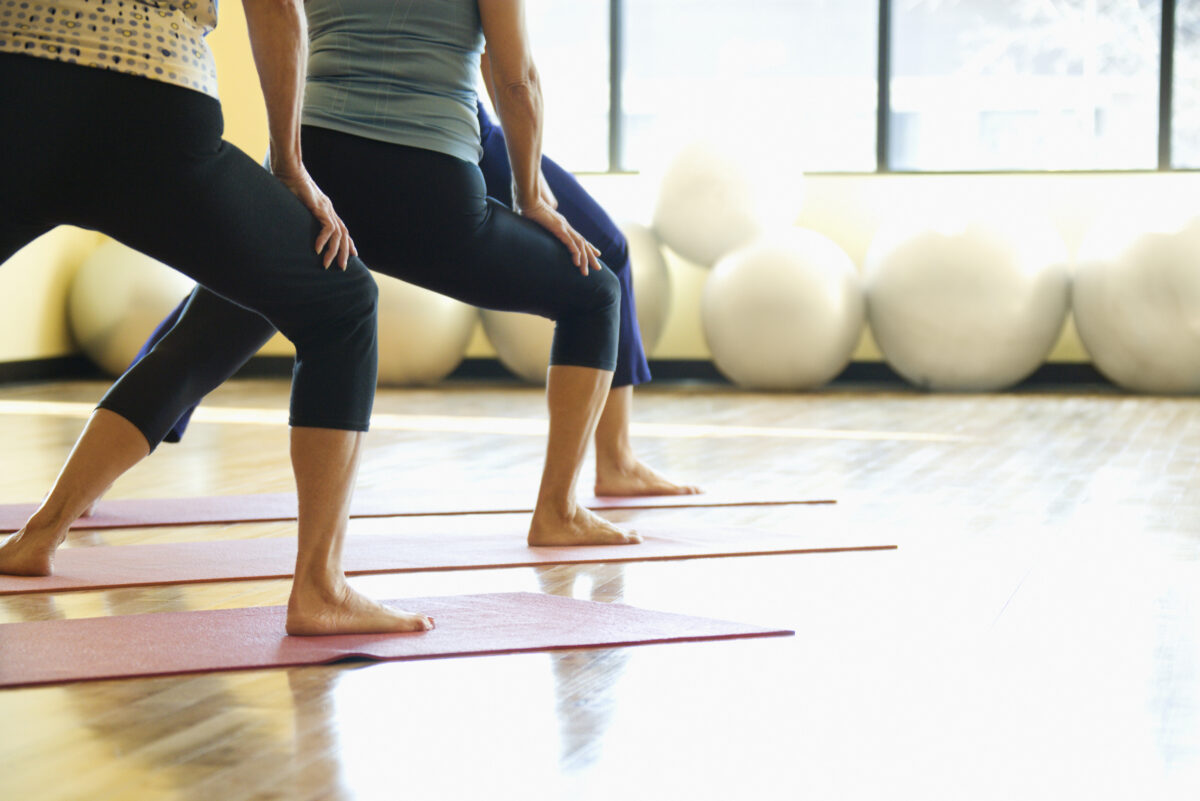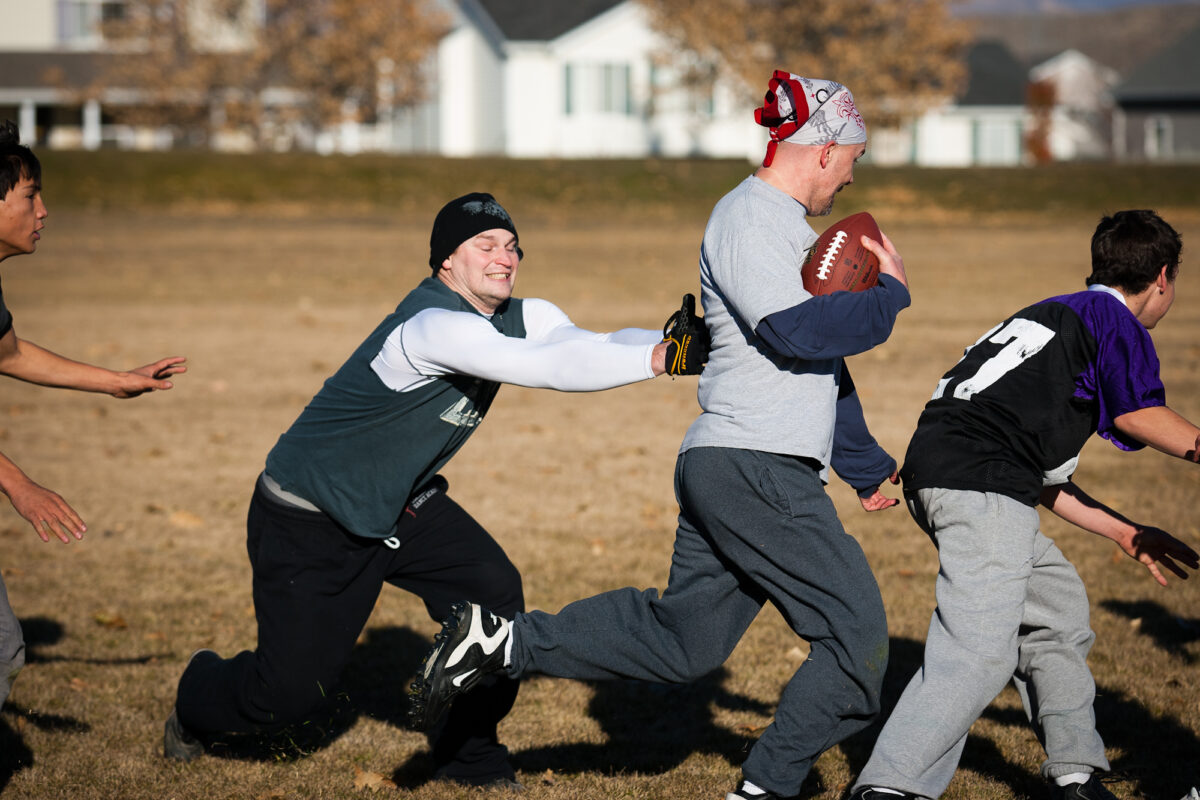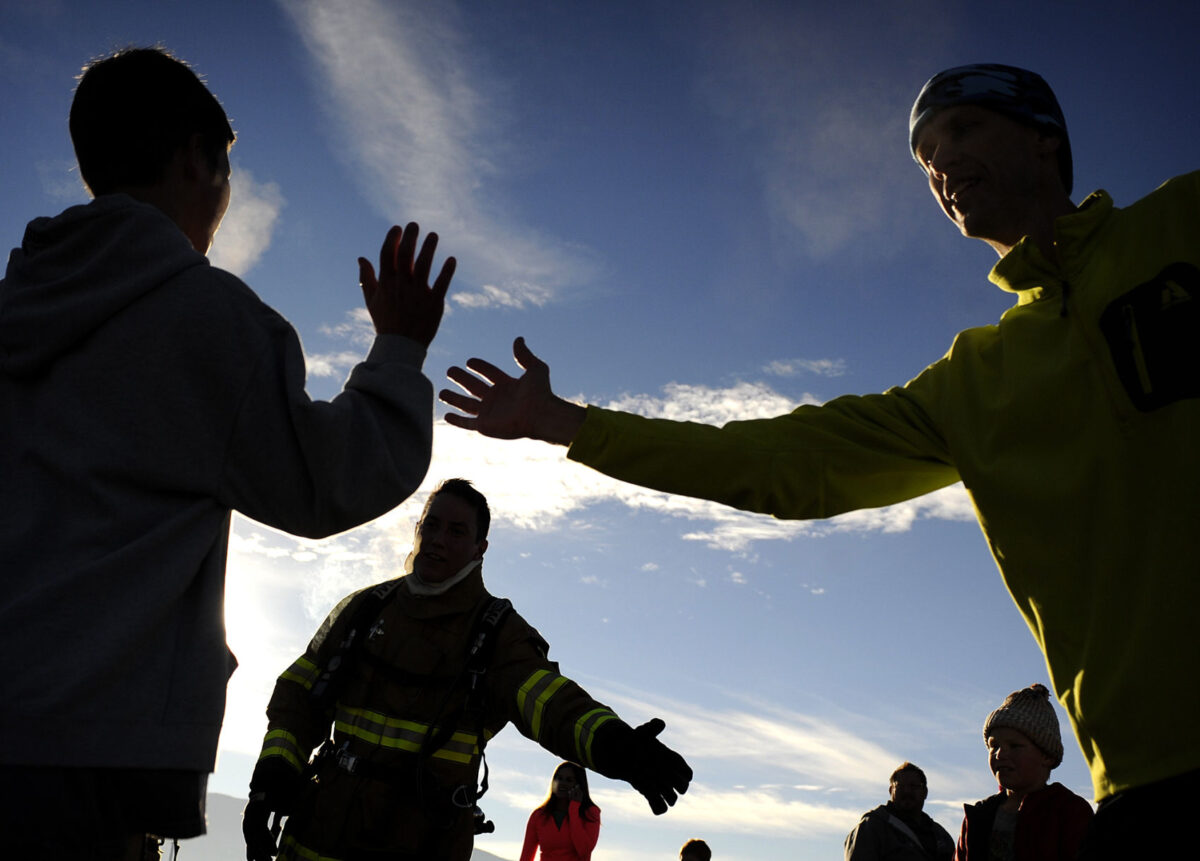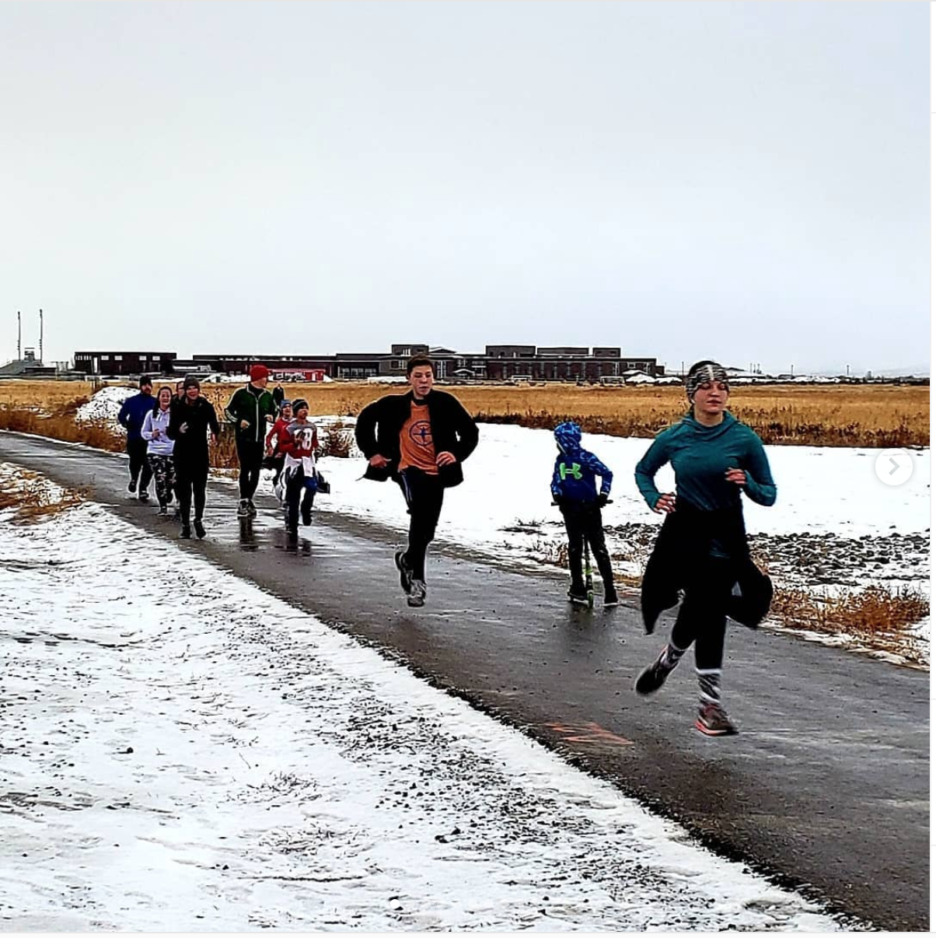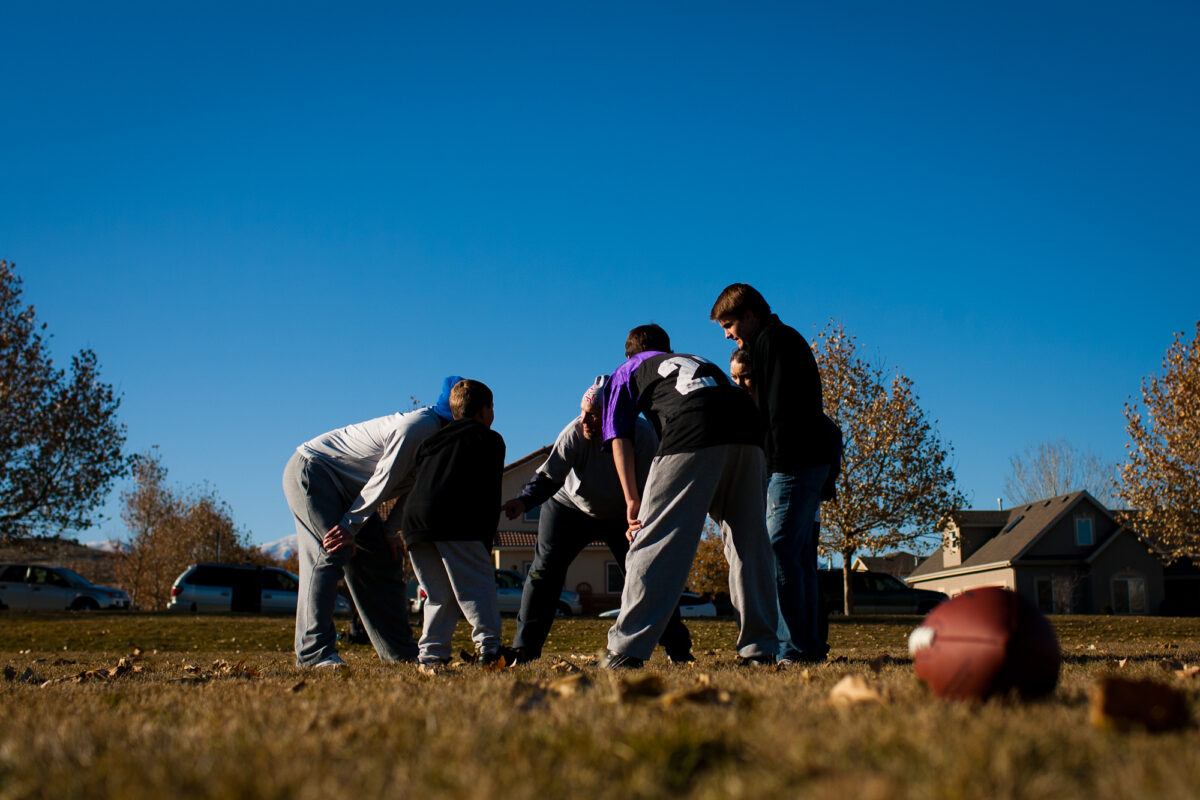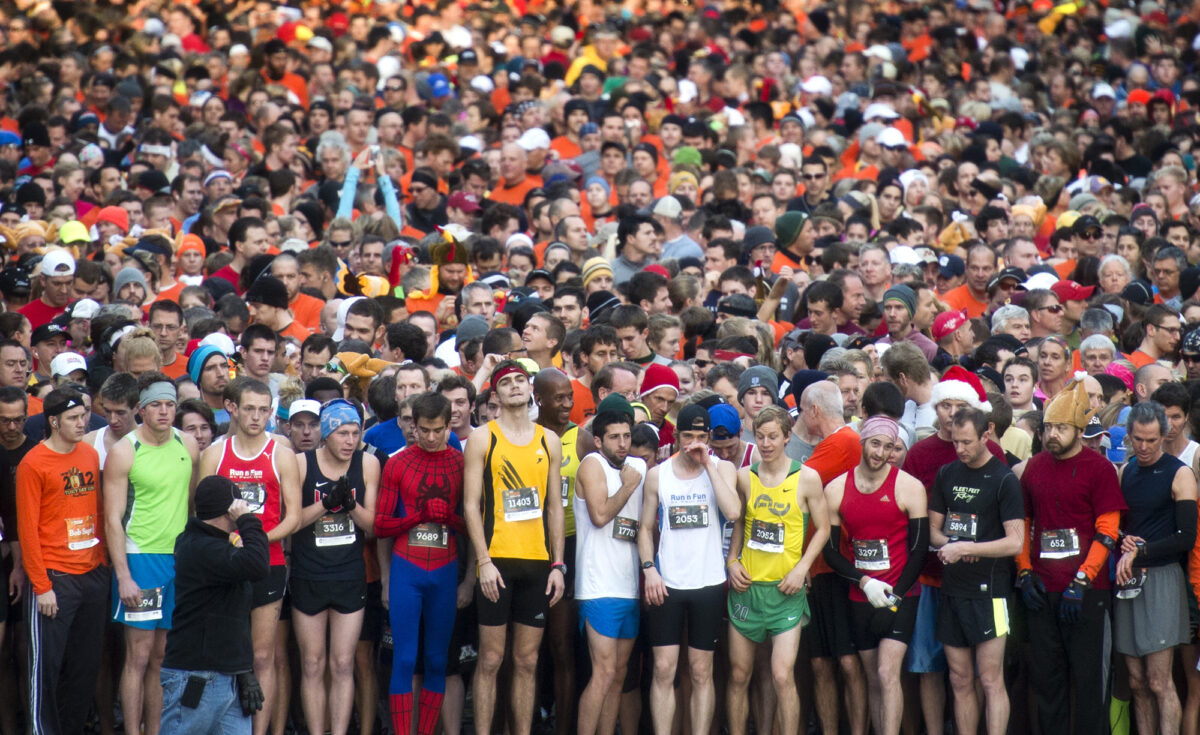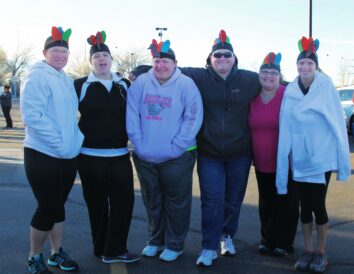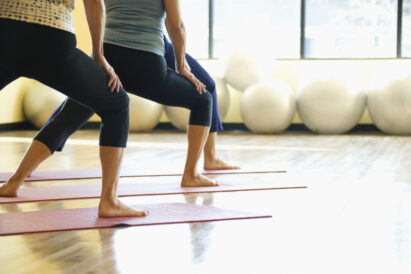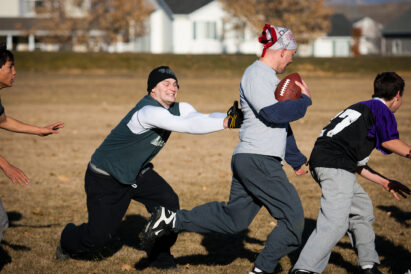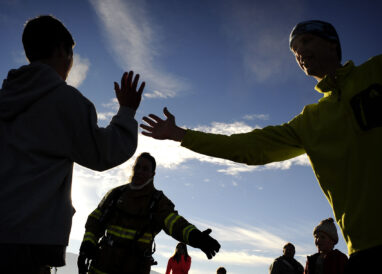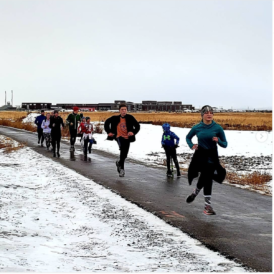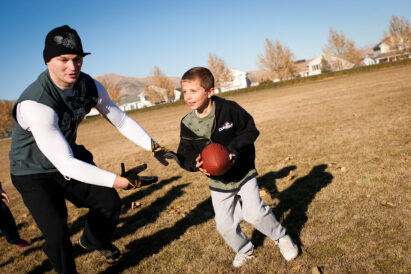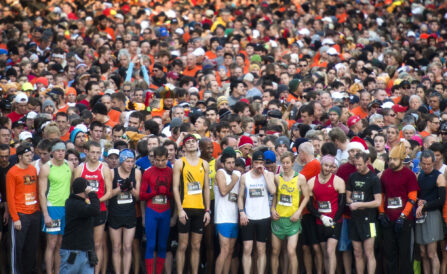Don’t just eat … move!: Exercising prior to feasting is also popular for Thanksgiving
-
Ryan and Tyson Zimmerman jump for a pass while Matthew Trappett falls down behind them during the Turkey Bowl touch football game at Nolan Park in Eagle Mountain on Saturday, Nov. 26, 2011. SPENSER HEAPS/Daily Herald
- People pose for pictures at the 2018 Thanksgiving run/walk. (Jamie Lampros, Special to the Daily Herald)
- STK – Fitness Class
-
Matthew Trappett tags out Ryan Zimmerman during the Turkey Bowl touch football game at Nolan Park in Eagle Mountain on Saturday, Nov. 26, 2011. SPENSER HEAPS/Daily Herald
-
Stephen Williams, right, and firefighter Robert Broome, center, congratulate runners as they past the finish line during the annual Eagle Mountain Turkey Trot on Thursday, Nov. 28, 2013.
-
@eaglemountaincity
Turkey Trot 2019
-
Players huddle to form a play during the Turkey Bowl touch football game at Nolan Park in Eagle Mountain on Saturday, Nov. 26, 2011. SPENSER HEAPS/Daily Herald
-
Matthew Trappett makes a hand off to Kade Zimmerman during the Turkey Bowl touch football game at Nolan Park in Eagle Mountain on Saturday, Nov. 26, 2011. SPENSER HEAPS/Daily Herald
-
Over 15,000 runners and walkers prepared for the start in the Lifetime Turkey Day 5K race, in Minneapolis. (SHNS photo by Glen Stubbe / Minneapolis Star Tribune)
For most of us, the first thing that comes to mind when we think of Thanksgiving activities is food.
Your mouth may be watering thinking of that freshly carved turkey, the creamy mashed potatoes. the savory stuffing, the hot rolls, the home-baked pies or any of the other decadent dishes that will be on your table — and you aren’t alone.
According to a study by the weight management organization Levity in 2024, the average American will consume more than 2,000 calories at Thanksgiving dinner, with some planning on indulging to the tune of 3,000 calories or more.
That’s a lot for our bodies to handle, but medical professionals tell us there are ways to reduce the physical impact of such a big meal.
The idea of “earning” your feast by exercising is a myth but Crystal Miskin, a Doctor of Physical Therapy and an associate professor at Rocky Mountain University of Health Professions in Provo, explained that one of the easiest methods to limit the negative consequences is to join the thousands who incorporate physical activities into their holiday plans.
“Physical activity is always important,” she said earlier this week. “Unless there are specific reasons on limiting physical activity, everyone should enjoy their annual ‘Turkey Bowl’ or ‘Turkey Trot.’ There are a number of benefits to physical activity but I think the one we tend to bank on is running a caloric deficit before feasting. The main benefits, however, are managing our blood sugar and insulin sensitivity, which can help us manage our holiday carb loading from the delicious stuffing, mashed potatoes and pies.”
She added that there are benefits from getting up and moving after dinner as well.
“Physical activity also helps boost our digestion and stimulates our gastrointestinal loading so doing a light walk after gorging ourselves can help with the bloating and sluggish feeling,” Miskin said. “Staying active improves circulation, reduces blood pressure, and helps counteract meal-related vascular stiffness. Holiday gatherings can involve stress, logistics and planning, family dynamics, and travel. Exercise releases endorphins and reduces cortisol, making it easier to enjoy the day.”
Here are a few of the most popular ways to get some exercise before (or after) your annual feast:
Turkey Bowl
No sport is associated with Thanksgiving Day as much as football. TVs across the country will be turned to gridiron action, but countless people will also head to local parks and fields for some pickup “Turkey Bowl” games of their own.
It can feel oh-so-good to loft that perfect spiral to a streaking receiver or make that diving catch in the end zone (with bonus points if it comes against a sibling), but it can also be a bit risky for those who don’t make football a regular part of the routine.
The most common injuries from these Thanksgiving Day showdowns are pulled or strained muscles — particularly hamstrings, quads, groins and calves — so health professionals recommend getting to the game early and putting in the time to warm up with stretching and running.
They also recommend paying attention to weather and the playing surface, as well as everyone being honest about their individual capabilities. The adrenaline may make it easy to feel like you can do everything, but that can have painful consequences later.
Turkey Trot
If you are more into the running scene, then there are options for you as well. While there have been a variety of “Turkey Trots” happening in various places in Utah throughout November, there are places to make that part of your Thanksgiving routine.
One of those is at Thanksgiving Point in Lehi, where it will be hosting its annual “RunTHANKFUL” event that includes a half marathon, a 10K, a 5K and a kid’s run. Billed as “Utah’s largest Turkey Trot,” the races kick off early on Nov. 27 (for more information, go to runtasticevents.com/races/thankful).
Eagle Mountain, Orem and Springville are also hosting their own “Turkey Trot,” events (see calendar).
Turkey Day fitness class
Maybe you are looking for something a little more structured and diverse than pickup football or running. If so, check out the options at your local gym or recreation center.
Many facilities have regular fitness classes such as cycling, yoga, CrossFit, Zumba or Pilates on Thanksgiving, with some moving their instructors into larger areas to accommodate larger crowds.
The Marshall N. White Community Center in Ogden, for example, is hosting a “Feast of Strength” cardio fuse class at 7 a.m. and a “Turkey Burn” high fitness class at 8 a.m. on Thanksgiving.
“Come burn calories, boost energy, and kick off Thanksgiving morning with a fun community workout before a big meal!” the center posted on its flyer.
Check with your local rec center or gym to see what options they might have for similar classes.
Turkey Day stroll
The weather can be anything from pleasant to wintery on Thanksgiving but if you have either fortitude or good fortune, it can be a great time to just head out for a nice walk.
The fresh air and movement can be a great way to connect with family. A word to the wise, though: If going after the big feast, don’t go on your stroll until after the cleanup is completed or anyone left behind might not be too pleased.
Expert tips for Thanksgiving
Miskin encourages everyone to know their limits and not push too hard when it comes to Thanksgiving exercise. She also has a few tips about how to enjoy the holiday without overdoing it:
- Eat normally throughout the day and hydrate. Don’t pass out; it’s not worth it.
- There is really no need to overeat or engorge yourself. Take smaller portions. Eat your veggies and protein first to help control your appetite. Eat slower and enjoy the company and conversation.
- After the meal, go for a walk for 10-20 minutes. Avoid lying down immediately if you are especially prone to heart burn. Stay hydrated. Sip alcohol in moderation and alternate with water.
- Remember the reason behind the holiday! It isn’t the food, it’s gratitude. Go back and remember the history of our nation and maybe about some of your family’s history and ancestors. It’s about loved ones and being around family and friends. Enjoy the traditions but perfection and Instagram-worthy photos and experiences is not the goal. Be present.
Turkey Day’s unsung health hero
While exercise can make a big difference for your body, the focus of the holiday can actually make an even bigger difference if it goes beyond just one day in November.
UCLA Health posted in 2023 that “saying thank you is nothing new. But practicing gratitude — regularly focusing on the positive parts of your life — is about more than having good manners. It can be a powerful health habit.”
The organization talked in the article about how finding more ways to be appreciative in your life can reduce depression, lessen anxiety, support heart health, relieve stress and improve sleep.
So while being active for the holiday certainly is important, finding ways to take the “thanks” from “Thanksgiving” more every day may be even more impactful.

